
OVERVIEW

TABLA DE COMPARACION
Below is a table comparing our feature packed ECU range. Click on the model in the header row to get more information on the given product.
| PORT INJECTION ENGINES | DIRECT INJECTION ENGINES | ||||||||
|---|---|---|---|---|---|---|---|---|---|
| M130 | M150 | M170 | M190 | M122 | M141 | M142 | M181 | M182 | |
| Outputs | |||||||||
| Direct Injector | – | – | – | – | 4 | 8 | 8 | 12 | 12 |
| Peak Hold Injector | 8 | 12 | 8 | 12 | – | – | – | – | – |
| Low Side Injector | 2 | 6 | 2 | 12 | 6 | 6 | 6 | 6 | 6 |
| Low Side Ignition | 8 | 12 | 8 | 12 | 4 | 8 | 8 | 12 | 12 |
| Low Side Output | – | – | – | 6 | – | – | – | – | – |
| Half Bridge Output | 6 | 10 | 6 | 10 | 6 | 10 | 10 | 10 | 10 |
| Inputs | |||||||||
| Universal Digital Input | 7 | 12 | 8 | 12 | 7 | 12 | 12 | 12 | 12 |
| Digital Input | – | 4 | – | 4 | – | 4 | 4 | 4 | 4 |
| Analogue Voltage Input | 8 | 17 | 8 | 17 | 8 | 17 | 17 | 17 | 17 |
| Analogue Temperature Input | 4 | 6 | 4 | 6 | 4 | 6 | 6 | 6 | 6 |
| Lambda Narrow Input | 0 | 2 | 0 | 2 | 0 | 2 | 2 | 2 | 2 |
| Knock Input | 2 | 4 | 2 | 4 | 2 | 4 | 4 | 4 | 4 |
| Communications | |||||||||
| CAN Bus | 1 | 3 | 1 | 3 | 1 | 3 | 3 | 3 | 3 |
| RS232 Port | 1^ | 1 | 0 | 1 | 1^ | 1 | 1 | 1 | 1 |
| LIN Bus | 1^ | 1 | 0 | 1 | 1^ | 1 | 1 | 1 | 1 |
| Flash Memory (MB) | 256# | 256 | 256 | 256 | 256 | 256 | 256 | 256 | 256 |
| Physical Size (mm) | |||||||||
| 107x127x39 (mm) |  |  |  | ||||||
| 162x127x39 (mm) |  |  |  |  |  |  | |||
| Weight (g) | 290 | 450 | 310 | 490 | 290 | 490 | 490 | 530 | 530 |
| No. of Connectors | |||||||||
| Plastic | 2 | 4 | 2 | 4 | 4 | ||||
| Autosport | 1 | 3 | 3 | 3 | |||||
| Pins | 60 | 120 | 66 | 136 | 60 | 120 | 120 | 136 | 136 |
#- M130 was 128MB until (Rev P)
^- M130 (Rev Q and above) and M122 have LIN and RS232 as alternate functions on other pins
Direct Injector Outputs (M122, M142, M182)
Maximum Injector Voltage = 80
Maximum Peak Current = 25
Maximum Hold Current = 15
Direct Injector Outputs (M141, M181)
Maximum Injector Voltage = 188
Maximum Peak Current = 20
Maximum Hold Current = 10
TECNOLOGIA DE NUEVA GENERACION
Advances in technology have increased the demands on a vehicle’s components, especially the ECU. This demand has reached the point where a single firmware to ECU configuration cannot meet the market’s ECU requirements (even with increased capacity and processor speed).
The M1 series was conceived by MoTeC to overcome this one-to-one, firmware to ECU limitation, by designing a system where operational efficiency, advanced features and flexibility are its primary objectives. At its core, M1 provides the ability to develop a suite of flexible and tailored solutions (packages), making it ideal for any application (however complex) and category management.
Key advantages of M1 systems:
- Latest generation high performance processor
- Large logging memory, fast Ethernet downloads
- Compact and lightweight in robust magnesium enclosures
- Supports direct injection and port injection applications
- Supports advanced logging features including Pro Analysis (i2 Pro)
- Advanced security system, incorporating an anti-tampering microprocessor
- Access log-in levels for multiple users
- Suitable for modern engines with DBW, Cam Control and multiple CAN buses
- Advanced logging features, high speed, multiple logs (with access logins)
- I/O expansion using E816, E888 expanders
- Flexible tuning software
- Programmable digital input system for Ref/Sync, wheel speeds etc.
- Programmable trigger levels, diagnostics
- All Low Side and Half Bridge outputs have PWM capability
MoTeC’s distinctive range of M1 ECU solutions
Targeted Solutions – We’ve done the configuration work for you, tailoring the ECU firmware to a specific vehicle or engine. In some cases this includes integration with vehicle control systems beyond the engine, for example, stability control, cruise control. Complete Plug-In kits are available for some applications, including any additional hardware and wiring looms as required. See targeted solutions for Vehicle, Bike, PWC or Snowmobiles.
GP (General Purpose) Solutions – MoTeC’s GP Solutions offer the flexibility to suit numerous port and direct injected gasoline engines. Comprising of:
- GPA (Advanced)
- GPADI (Advanced with Direct Injection)
- GPR (Race)
- GPRP (Race with Paddle shift)
- GPRDI (Race with Direct Injection)
- GPRPDI (Race with Paddle Shift and Direct Injection)
These variants that can be configured to suit a wide range of applications.
Development Solutions – Those who are skilled at coding can now develop fully customised control strategies at the firmware level, creating unique ECU functionality for themselves or other customers. Developers can build custom controls into an existing package, or create a new project from scratch. In either instance, the resulting firmware can be loaded into a single Development ECU or rolled out for customers around the world to purchase.
Ruggedised – Sometimes an extra level of protection for electronic components is required, such as marine applications or environments subject to dirt or dust. Our Ruggedised M1 hardware ensures maximum longevity under these extreme conditions.
SOFTWARE
MI Tune
M1 Tune is the tuning software for MoTeC’s M1 ECUs. It is very different to MoTeC’s previous ECU Manager software so we recommend customers watch our training webinars to help familiarise themselves, and use the comprehensive in-built Help.
- M1 Tune provides access to the tuning features of the M1 ECU. It is highly flexible, allowing multiple, customised screen layouts similar to the i2 Data Analysis software.
- The program is unique in that it adapts to any customisations that have been made to the ECU via the M1 Build software. As Tables, Parameters or Channels are added, M1 Tune automatically conforms to provide access to these items.
- It also features on screen logging whereby data from the ECU is automatically recorded for quick and easy analysis directly on the tuning screens.
M1 Tune software is free to download and within the program is a sample package for you to examine.
Link M1 Tune.
System Requirements:
The M1 Tune application allows many customisable screen layouts to make your engine calibration easier and faster. To get the most out of Tune, you should use the highest screen resolution possible. Using a low screen resolution will reduce your layout options.
- Operating systems: Windows XP, Vista, 7 or 8 (32 or 64 bit)
- Minimum screen resolution: 1366 x 768
- Recommended screen resolution: 1920 x 1080 or greater
- Communications Port: Ethernet Port
- Communications Protocol: IPV6
Webinars
You can also watch introductory webinars on M1 Tune. Link
M1 Build
M1 Build is, simply put, a revolution in engine management customisation. No longer are you restricted to merely modifying the parameters made available via a tuning application.
By investigating and experimenting with their own control strategies and developing their own intellectual property, customers can gain a distinct performance advantage and stay ahead of their opposition.
M1 Build customises the functionality of the ECU, providing an unprecedented level of control. It allows the user to add Tables, Parameters and Channels and to enter ‘Script’ that defines how the ECU operates. The Script is a ‘C’ like programming language that enables entry of logic, calculations and algorithms.
If a new strategy is required to give you the competitive edge, then an M1 Development ECU is ideal for you.
Link M1 Build.
SEGURIDAD
The M1 ECU allows different levels of access for different users e.g. engine tuner, chassis tuner, data engineer, and scrutineer. Each user can have a separate login to restrict access to particular areas of tuning and data logging.
The M1’s advanced security system is based on public-key cryptography, the cornerstone of secure internet transactions, so it is virtually impossible to change the ECU function without authorised permission. Security is enforced by the ECU and protected by a microprocessor with integrated measures to prevent tampering.
CONFIGURATION
The M1 series ECUs come with three configuration options.
Locked Configuration
A locked configuration is appropriate when an ECU contains specific firmware to suit the application. The user can tune the engine in the normal way but the ECU cannot be re-configured for another application.
Standard Configuration
The standard configuration allows the user to load a selection of firmware packages available from MoTeC. They incorporate different levels of functionality and the user can choose one to suit their requirements. Additional packages can be loaded into the ECU as and when requirements change.
Open Configuration
The open configuration provides a fully flexible ECU solution that can be precisely tailored to individual requirements. Third party developers can be trained to use MoTeC M1 Build software to develop their own control strategies.
Intellectual property is protected by the M1 ECU’s security system and remains with the ECU owner.
CATEGORY MANAGEMENT
The combination of an advanced security strategy, configurable firmware and a high performance processor make the M1 ECU an ideal choice for categories with restrictions in place for either performance parity or cost containment. Firmware can be written specifically for the category, limiting the functionality to the class requirements.
Multiple data logging sets are available which can be partitioned with restricted access to allow generation of both judicial (scrutineering) and team data from the same device.
The M1 ECU’s security system prevents unauthorised access to data and implementation of unspecified functionality.
LICENCIA
To ensure that you only pay for what you want, M1 licensing has been conveniently split into three parts. The three licences are firmware, logging and analysis as set-out below.
M1 FIRMWARE LICENCE
Together with the hardware purchase of an M1 Series ECU, MoTeC’s M1 solution includes firmware which is purpose built for the given application. The firmware licence pricing structure varies according to the number and complexity of functions the firmware performs.
M1 FIRMWARE LICENCE TRADE IN
M1 customers wanting to replace an existing Firmware Licence in their ECU may be able to trade it in to reduce the cost of the new Firmware Licence. The trade in value is 80% of the price of the old Licence. Customers will only be charged the difference between the trade in value and the new Licence cost.
Example:
Original Licence cost $1,000
Trade it in for $800
New Licence cost $1200
Customer only pays $400
Like any other purchase, these transactions are completed through an authorised MoTeC dealer.
Important conditions to the Trade In System:
- The trade in is available at the time when a Firmware Licence is being removed for replacement with another. Firmware Licences will not be traded in if doing so would leave the ECU without a Package.
- M1 options can’t be traded in (e.g. Logging) – they remain with the ECU
- Development Licences can’t be traded in
- Orders cannot have Trade Ins only; a new Licence or additional options must form part of the trade in order
- Trade in is not available for ECUs sold with Category or Partner Firmware Licences
- MoTeC reserves the right to refuse a trade in for any reason
- Trade in is for the Firmware Licence only; no hardware or activation is included.
- If the new Firmware Licence costs less than the trade in value, there will be no charge but also no refund or credit.
M1 LOGGING LICENCE
The logging licence determines the number of channels and the sample rates available, as shown in the table below.
| Logging Licence – Level 3 | Optional | 8 | 1000 Hz | 2000 |
| Logging Licence – Level 2 | Optional | 1 | 200 Hz | 200 including diagnostics |
| Logging Licence – Level 1 | Standard | Fixed log set and rate | ||
M1 ANALYSIS LICENCE
There are two levels of analysis licence available. This licence reflects which of the following analysis software you can use:
- Analysis Licence – Level 2, MoTeC i2 Pro (optional)
- Analysis Licence – Level 1, MoTeC i2 Standard (standard)
GLOSARIO M1
Whether you are new to MoTeC or are accustomed to our older ECUs, learning M1 terminology and becoming familiar with these definitions will help you get to know our M1 ECUs:
M1 Package:
An M1 Package is the file that is loaded into an M1 ECU. An M1 Package contains the entire ECU state including the tuning data, Worksheets, security and the M1 Firmware. M1 Packages themselves are opened and modified in M1 Tune.
M1 Build Project:
An M1 Build Project is the complete source-level definition which is compiled using M1 Build into an M1 Package. A Project defines the M1 ECU functionality, and is designed within the M1 Build application.
M1 Firmware:
M1 Firmware is the ECU operating code which is generated by M1 Build by compiling an M1 Build Project. This is distinct from an M1 Package, as it does not contain the tuning data or Worksheets. A firmware can be loaded into an ECU that has a matching Firmware Licence.
ECU Licence:
An ECU Licence is the file that is loaded into an M1 ECU that contains one or more Firmware Licence(s) and ECU Options such as logging. The Firmware Licences contained within the ECU Licence control which M1 Firmware can be loaded into the ECU. An ECU can be limited to allow the loading of one M1 Firmware only, or multiple depending on the ECU Licence contents.
M1 Build Key:
This is issued to M1 developers at the time of purchasing the M1 ECU and Development Licence. It is used as a security measure to ensure that a developer’s firmware can only be loaded into an ECU with the matching M1 Development Licence.
M1 Development Licence:
This is the Licence that turns an M1 ECU into a Development ECU. The M1 Development Licence is installed into an M1 ECU at the time of purchase and allows the loading of firmwares built with the matching M1 Build Key.
Development ECU:
This is an M1 ECU that contains an M1 Development Licence. The particular model of hardware is selectable.
Tuning Data:
In the M1 environment, the tuning and calibration information used within an M1 Package is considered to be the Tuning Data. When a Package is first built, all of this data is left blank. To populate the tables and parameters, these values can be migrated from an existing Package or filled in one item at a time using M1 Tune.
M1 Package Archive:
This is the distribution file which is used for all M1 Packages, either through the website or for passing Packages from one PC to another. A Package Archive is a self-extracting file which is unpacked by an installed version of Tune, into the correct directory, without the end user needing to know the directory structure or naming systems.
M1 Public Package:
This is a Package developed in-house by MoTeC engineers for a particular application. It is visible to all on MoTeC Online, and may be installed in an M1 ECU with a matching Licence, which may be purchased via a dealer through MoTeC Online. MoTeC support staff can offer comprehensive assistance for these products.
M1 Beta Package:
This is either a pre-release version of a new Package, or a pre-release update of an existing Package. In either case it is available to logged-in users, but may not have complete help or all features implemented. It is made available without obligation, and will not be supported by MoTeC support staff until publicly released.
M1 Partner Package:
This is a Package developed by an M1 Developer using an M1 Build Key and an M1 Development ECU. It may be based on a Public Package with unique features added by the developer to offer a specific solution.
A Partner Package is visible in MoTeC Online only to the partner, after login. They can purchase a Licence for each ECU and sell this on to their customers. MoTeC support staff will not provide assistance for these Packages, it must be provided by the Partner.
DIRECTORIO
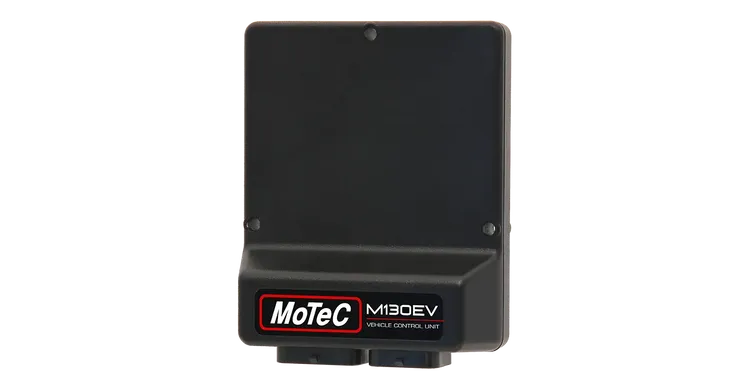
M130
Part No: #13130
Cylinders: Up to 8
Injectors: Port
Connector: Tyco
Logging Memory: 256Mb
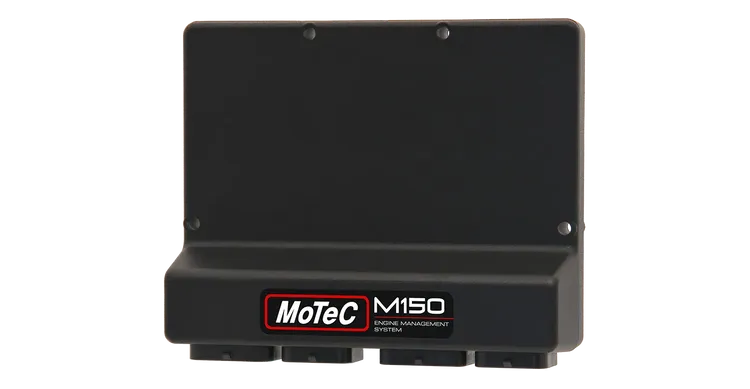
M150
Part No: #13150
Cylinders: Up to 12
Injectors: Port
Connector: Tyco
Logging Memory: 256Mb
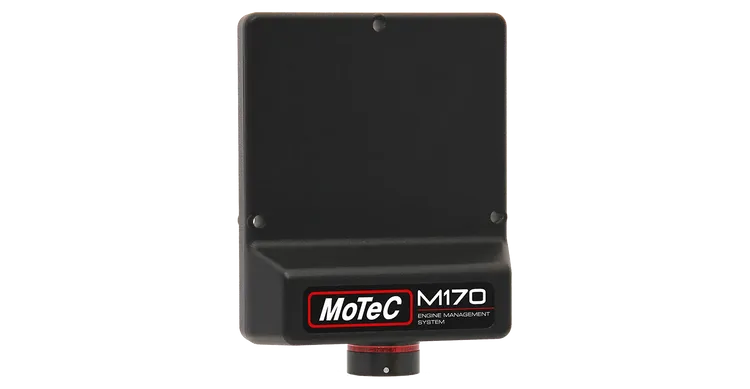
M170
Part No: #13170
Cylinders: Up to 8
Injectors: Port
Connector: Autosport
Logging Memory: 256Mb
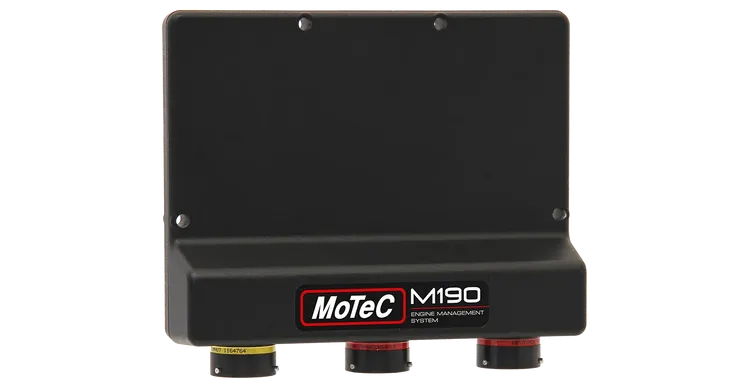
M190
Part No: #13190
Cylinders: Up to 12
Injectors: Port
Connector: Autosport
Logging Memory: 256Mb
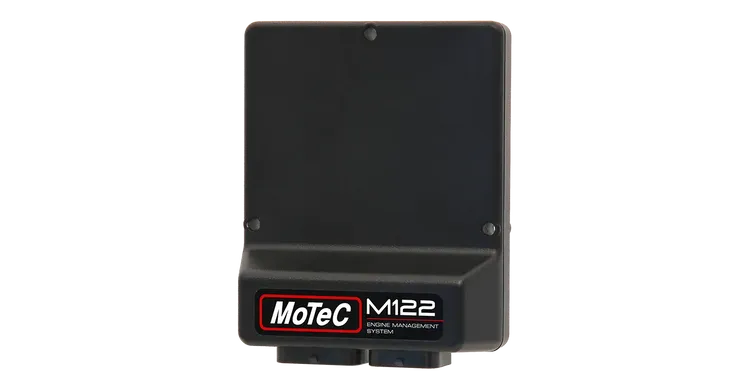
M122
Part No: #13122
Cylinders: Up to 4
Injectors: DI
Connector: Tyco
Logging Memory: 256Mb
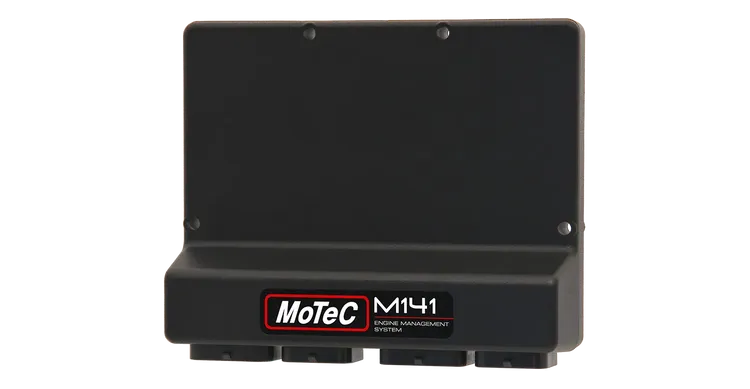
M141
Part No: #13141
Cylinders: Up to 8
Injectors: DI Piezo
Connector: Tyco
Logging Memory: 256Mb
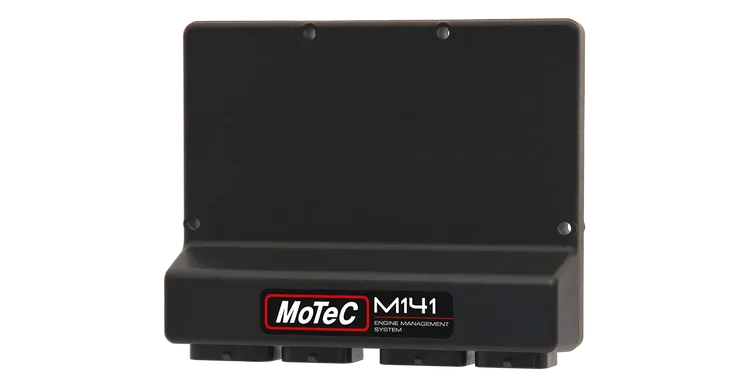
M142
Part No: #13142
Cylinders: Up to 8
Injectors: DI
Connector: Tyco
Logging Memory: 256Mb

M181
Part No: #13181
Cylinders: Up to 12
Injectors: DI Piezo
Connector: Autosport
Logging Memory: 256Mb
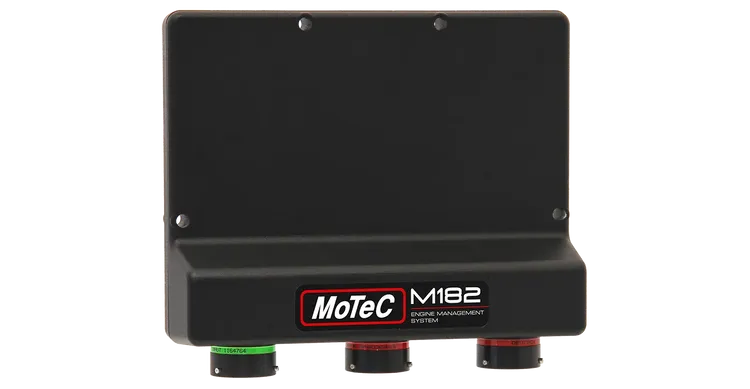
M182
Part No: #13182
Cylinders: Up to 12
Injectors: DI
Connector: Autosport
Logging Memory: 256Mb
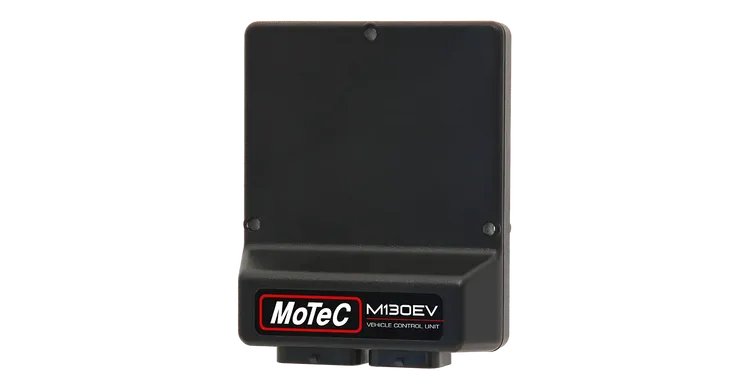
M130EV
Part No: #13130EV
Cylinders: Up to 8
Injectors: Port
Connector: Tyco
Logging Memory: 256Mb
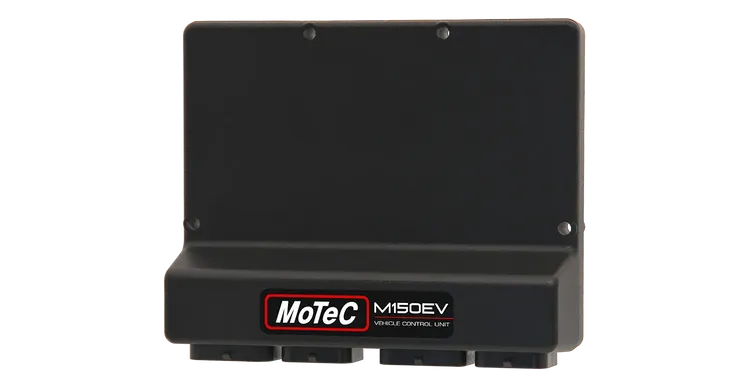
M150EV
Part No: #13150EV
Cylinders: Up to 12
Injectors: Port
Connector: Tyco
Logging Memory: 256Mb
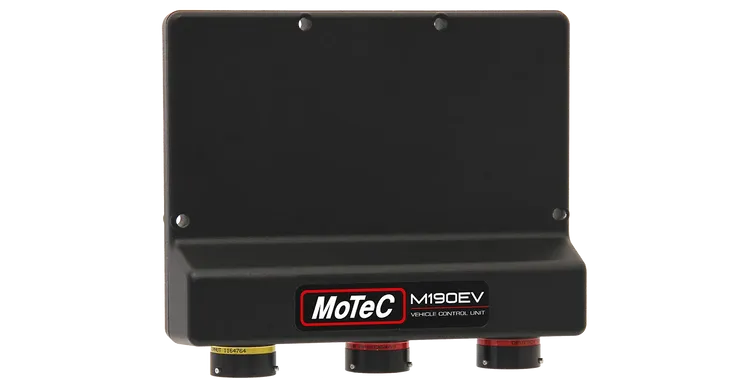
M190EV
Part No: #13190EV
Cylinders: Up to 12
Injectors: Port
Connector: Autosport
Logging Memory: 256Mb